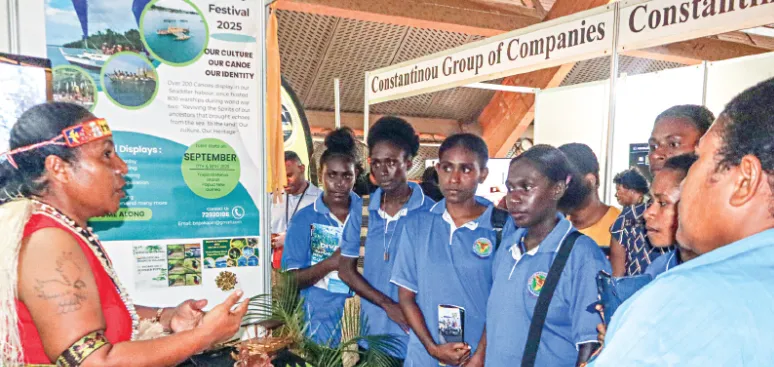At the inaugural National Tourism Conference and Expo held at the Hilton Hotel in Port Moresby, Papua New Guinea’s Minister for Tourism, Arts and Culture, Belden Namah, delivered a powerful message: “Tourism is PNG’s ‘golden bowl’ — yet it remains untapped.”
This bold yet sincere declaration reveals the vast economic potential that has long been overlooked by the nation.
“Tourism in PNG is not dead — tourism in PNG is still alive!” Minister Namah declared in his speech, calling the event a historic milestone as the country’s first comprehensive national-level gathering for the tourism industry.
“Too many people keep their eyes on other industries and fail to see that right here in our own country lies a golden bowl.”
He acknowledged that tourism, as an industry, has not yet received the strategic importance it deserves in PNG. “We must come together to face the many challenges affecting tourism development. Together, we must create a friendlier, safer, and more accessible tourism environment — one that the world is willing and confident to visit.”
Namah further emphasized, “I will not downplay tourism’s potential just because we lack resources. As a patriot and as the responsible minister, it is my duty to turn our limitations into strengths and awaken this sleeping golden bowl so it may shine.”
His words are both commendable and thought-provoking. Tourism is not merely sightseeing and taking photos — it plays a key role in economic diversification, revitalizing society, and shaping a nation’s image.
Eric Uvovo, CEO of the Tourism Promotion Authority (TPA), also addressed the audience, saying, “This national conference marks a pivotal moment in unleashing PNG’s tourism potential and turning the sector into a key economic driver.”
He painted a vivid picture of PNG’s rich tourism offerings: “From the breathtaking highlands to our warm tropical coastlines, from vibrant multicultural communities to our pristine ecosystems — PNG has everything it takes to be a world-class tourism destination.”
But he also warned: natural resources alone are not enough. Cooperation, investment, and a shared vision for sustainable development are essential. “Tourism not only showcases our culture and beauty — it is a critical pathway for economic transformation.”
What can tourism bring to PNG?
Everything that mining can bring economically — tourism can also deliver. But tourism offers more: what mining cannot provide, tourism often can. Unlike extractive industries that rely on upstream state-controlled capital and technology, tourism allows everyday citizens to benefit directly from each visitor’s spending.
Augustine Mano, Managing Director of MRDC, highlighted tourism’s practical significance with hard numbers: “We don’t feel tourism’s impact today because our visitor numbers are too low. Only 135,000 people visited PNG last year, compared to over 1 million in Fiji, 3.2 million in New Zealand, and 7.4 million in Australia.”
“Now imagine if 1 million tourists visited PNG each year and each spent $1,000 — that’s $1 billion flowing into our country. If they spent $2,000, or if we reached 2 million visitors, that’s $3 billion — equivalent to one Wafi-Golpu mining project annually.”
Mano pointed out sharply, “The beauty of tourism lies in the fact that every dollar goes straight into the economy, impacting all levels of society. Unlike mining and oil, where wealth is often centralized, tourism’s multiplier effect is broader and faster.”
He concluded, “This conference must spark real dialogue on the critical issues facing our tourism sector — and act as a catalyst for transformational change.”


